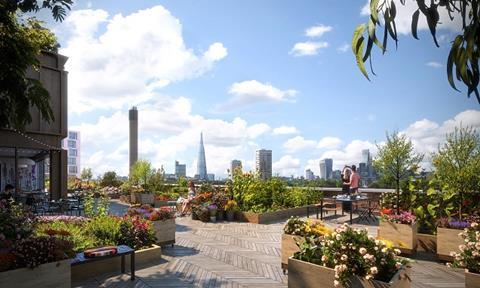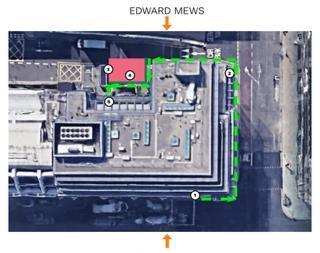Grosvenor Britain & Ireland, one of the oldest landowners and developers in London, is making its first foray into the newest sector of residential property: build-to-rent.

Its first scheme, a £500m 1,500-unit development on the site of the former Peek Frean biscuit factory and Lewisham Southwark College in Bermondsey, is due to go before Southwark Council’s planning committee later this year.
Simon Harding-Roots, executive director, major projects, talks to Property Week about its plans for the scheme and the BTR sector in general.
What made you choose Bermondsey for your first BTR scheme?

It is well located with a strong community. When the opportunity arose, it aligned well with our placemaking aspirations and as a place for our BTR proposition – our track record is in creating and managing communities rather than just a building-by-building approach.
The area also has a fascinating past. The biscuit factory gave us a great canvas, and the adjacent college site will allow us to improve permeability by creating a direct connection from Bermondsey underground station to The Blue, the local marketplace.
What are your plans for the Bermondsey site?
We launched our £500m masterplan design in 2016. It comprises around 1,350 apartments ranging from studios to three-beds; 100,000 sq ft of office space across two buildings with ground-floor retail, leisure, community and culture facilities; and a secondary school.
We’re retaining one of the original warehouses. It’s an impressive building with a 10-metre-high ceiling. We bought the site from Workspace, which will continue to operate some buildings on the site. Everything else will be built from the ground up but with sensitivity to the heritage of Bermondsey.
How will the development reflect Grosvenor’s approach to placemaking?
We’ll be holding this scheme for a long time. The typical ‘develop, sell and exit in the shortest time possible’ strategy doesn’t appeal to us. Our vision for the project is to stitch it into the existing neighbourhood to avoid creating an ‘us versus them’ dynamic.
We’ve done this through design, by making the scheme open and not gated, and through social engagement. Our design has also been informed by the two historians who run the biscuit factory museum, who have generously shared their knowledge of the site with us.
What has been the most challenging aspect of the scheme?
The differences between BTR and housing for sale are only just being understood. The fact the draft London Plan recognises that the economics are different is very encouraging. However, there are sticking points. Differing economics mean BTR can’t deliver as much affordable housing as housing for sale.
We are seeking to keep rents as affordable as possible across the site. Clearly this means not as deep a discount for the affordable units, but the scheme overall will be more affordable to a greater number of people.
What’s the next step for the scheme and your BTR strategy?
We’re currently deciding how to brand the development and whether to manage the properties in-house or work with a manager. We hope to have a committee hearing in the next two months, and if successful we will look to complete the first phase by 2022 and the entire build in seven years. Once this is off the ground, we are keen to see what other BTR redevelopment projects we can get involved in, in Southwark and beyond.































No comments yet